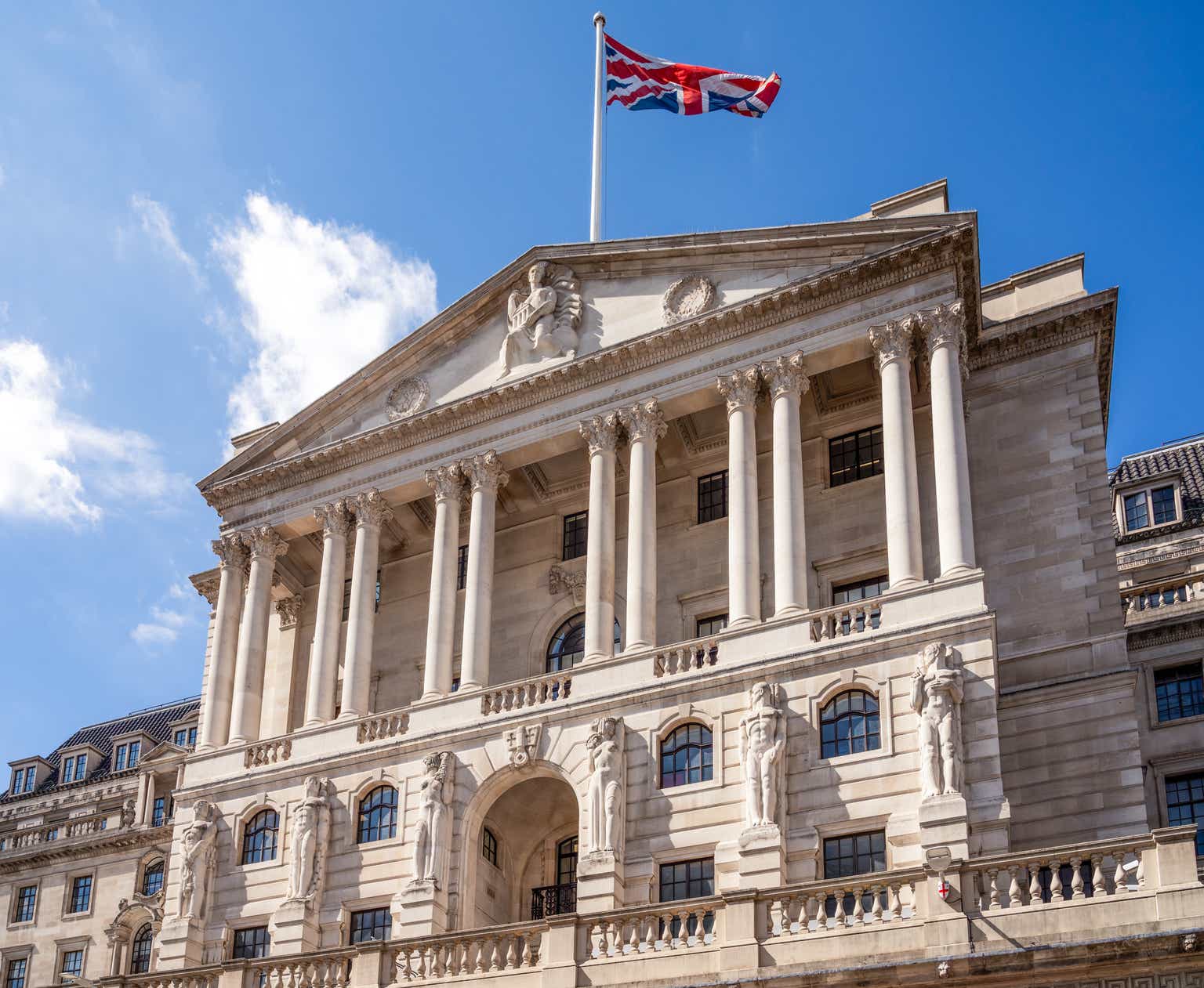Inflation in May had surprised on the high side yet again with a year-over-year rate of 8.7%, and core inflation re-accelerated to a concerning rate of 7.1%. In response to the inflation news, the Bank of England (BOE) raised the base rate today by 50 basis points (bps) to 5.0% with a vote of 7–2. Two members of the Monetary Policy Committee (Silvana Tenreyro and Swati Dhingra) preferred to maintain the bank rate at 4.5%.
The majority opted for the hawkish option of a larger hike when markets were on the fence between a 25 and a 50 bps increase. In our view, the bank is trying to counter the view that it is falling “behind the curve” on price pressures.
With UK inflation being as sticky as superglue, markets are now pricing an interest rate peak at 6% by the end of the year. Even though the bank’s monetary policy summary pointed to falling future inflation pressures from declining cost indicators, the following paragraph suggests that the policymakers saw themselves cornered into action by the bank’s inflation mandate:
“The MPC’s remit is clear that the inflation target applies at all times, reflecting the primacy of price stability in the UK monetary policy framework. The framework recognises that there will be occasions when inflation will depart from the target as a result of shocks and disturbances. Monetary policy will ensure that CPI inflation returns to the 2% target sustainably in the medium term.”
Monetary policy works with long lags. Previous rate hikes are still working their way through the economy, for example through cooling the housing market. A standard 2-year fixed rate mortgage based on a 75% loan-to-value was at 1.2% in September 2021, and reached 6.29% on 21 June 20231, similar to the level after the gilts crisis in the autumn of 2022.
If interest rates stay as high as markets expect, mortgage borrowers could face a painful readjustment on their payments when their current deals expire. The Resolution Foundation estimates that annual repayments could be £15.8 billion a year higher by 2026 compared to December 2021, when the bank started increasing interest rates.2
Borrowers re-mortgaging in 2024 could see their repayments rise by £2,900 on average. In summary, the bank’s actions on interest rates are yet to be fully felt and will translate into a much weaker economy and lower inflation.
The bottom line
We think that UK gilts look attractive now as the Bank of England’s tightening campaign will sharply cool the economy and eventually bring down inflation. In currency markets, the pound sterling has risen strongly against the US dollar in recent weeks to 1.28.
While it is still somewhat attractively valued3, it did not react positively to today’s hawkish move, indicating that further gains will be much harder to come by.
1 Source: What are today’s UK mortgage rates? | 22 June 2023 | Uswitch
2 Source: Resolution Foundation, 17 June 2023, The Mortgage Crunch
3 The purchasing power parity exchange rate for GBP/USD is around 1.48. Source: Organisation for Economic Cooperation and Development.
Disclosures
These views are subject to change at any time based upon market or other conditions and are current as of the date at the top of the page. The information, analysis, and opinions expressed herein are for general information only and are not intended to provide specific advice or recommendations for any individual or entity.
This material is not an offer, solicitation or recommendation to purchase any security.
Forecasting represents predictions of market prices and/or volume patterns utilizing varying analytical data. It is not representative of a projection of the stock market, or of any specific investment.
Nothing contained in this material is intended to constitute legal, tax, securities or investment advice, nor an opinion regarding the appropriateness of any investment. The general information contained in this publication should not be acted upon without obtaining specific legal, tax and investment advice from a licensed professional.
Please remember that all investments carry some level of risk, including the potential loss of principal invested. They do not typically grow at an even rate of return and may experience negative growth. As with any type of portfolio structuring, attempting to reduce risk and increase return could, at certain times, unintentionally reduce returns.
The information, analysis and opinions expressed herein are for general information only and are not intended to provide specific advice or recommendations for any individual entity.
Frank Russell Company is the owner of the Russell trademarks contained in this material and all trademark rights related to the Russell trademarks, which the members of the Russell Investments group of companies are permitted to use under license from Frank Russell Company. The members of the Russell Investments group of companies are not affiliated in any manner with Frank Russell Company or any entity operating under the “FTSE RUSSELL” brand.
The Russell logo is a trademark and service mark of Russell Investments.
This material is proprietary and may not be reproduced, transferred, or distributed in any form without prior written permission from Russell Investments. It is delivered on an “as is” basis without warranty.
UNI-12256
Original Post
Editor’s Note: The summary bullets for this article were chosen by Seeking Alpha editors.
Read the full article here











